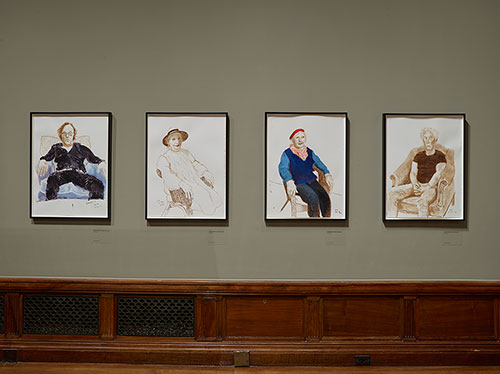In the 1980s, while he experimented with neo-Cubist distortions in his paintings, Hockney continued to make traditional drawings as a means of looking inward. In the autumn of 1983, he produced a series of contemplative self-portraits in which he observed himself, as a middle-aged man, with honesty and vulnerability. “I just thought I’d look at myself. As I go deafer, I tend to retreat into myself, as deaf people do,” he explained. In another self-portrait series, executed in 1999, he adopted a more playful attitude in a range of facial expressions.
A few years later, Hockney turned to watercolor, a medium he had not explored since the 1960s. This new way of working freed up his approach, allowing him to draw quickly and directly on paper. He described these watercolors as “portraits for the new millennium,” convinced that, despite his experimentation with photography and other technologies, the human eye and hand were still the best tools for capturing the individuality of his sitters.
Artwork: © David Hockney

